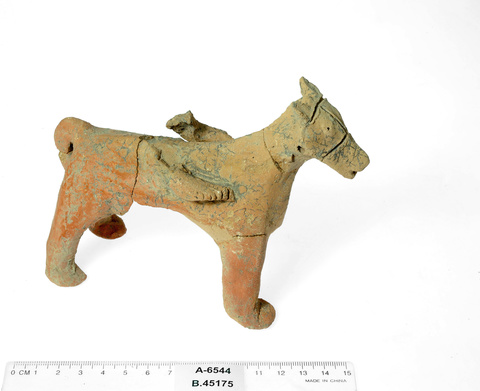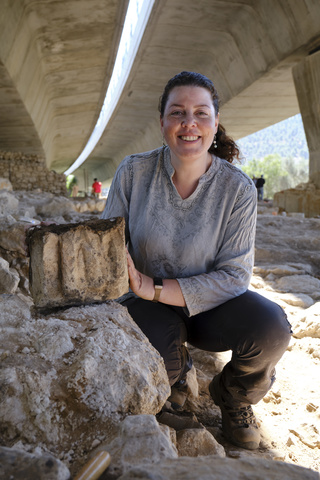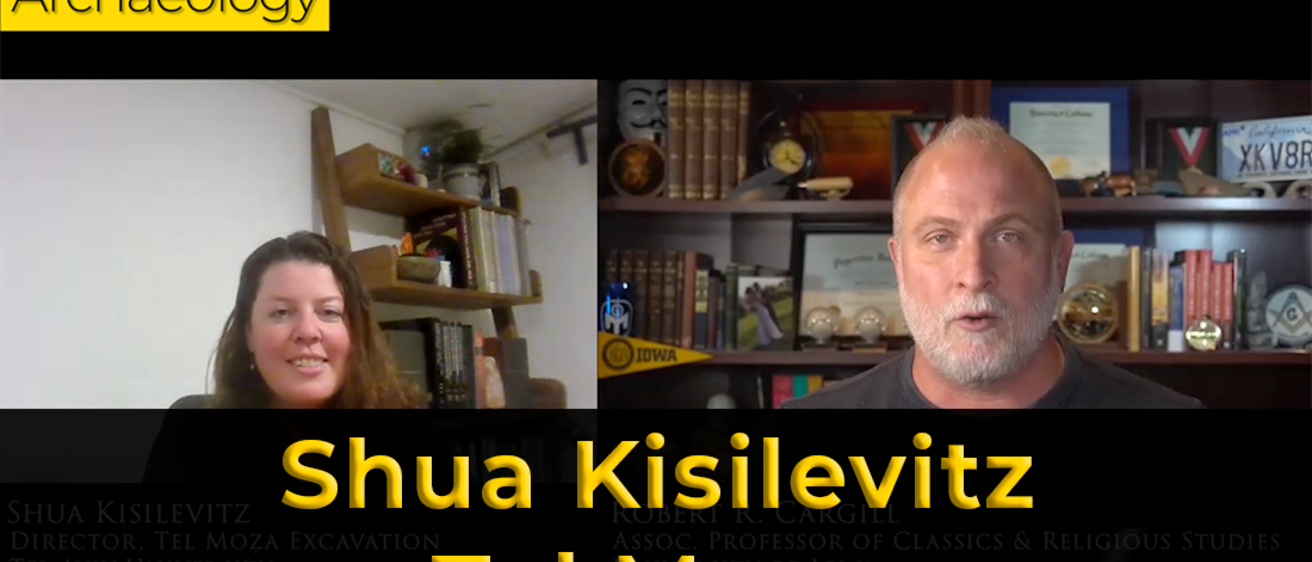The Tel Moza Excavation is one of the most talked about archaeological digs in Israel today. This is largely due to the fact that the team unearthed a temple—complete with walls, a holy of holies, an altar, a cult stand, and figurines/idols—all together in a site about 5 miles west of where the temple in Jerusalem once stood. What's more, the Tel Moza temple was in use from the 10th century BCE all the way down through at least the end of the 7th century BCE—the same time that the biblical First Temple was in use!
So how could another temple not only exist, but appear to prosper for the entire life of the Temple of Solomon? This is what I asked the Director of the Tel Moza excavation, Shua Kisilevitz, along with many other pressing questions in a recent video interview.
I first asked about the origins of the Tel Moza dig, which began as a salvage excavation conducted as part of the construction of a new bridge for Israel's Highway 1 that served to bypass the modern Moza neighborhoods. This is how Director Kisilevitz got involved in the excavation. As a doctoral student at Tel Aviv University (TAU) digging at Tel Hazor and living near the Tel Moza site, she was a natural choice to lead the salvage excavation when the Israel Antiquities Authority (IAA) partnered with TAU for the project.

Even though the site had previously been partially excavated, it wasn't long before Kisilevitz made discoveries that would change the course of her career. First, she uncovered an altar in front of what would become the eastern entrance to the temple, along with small figurines that were buried next to an ash pit that serviced the altar. This is when Kisilevitz realized that they might have a monumental temple. But how could an Iron Age monumental temple exist in the shadow of the Jerusalem Temple, especially when the reforms of Hezekiah (2 Kings 18:4) in the late 8th century BCE, and of Josiah (2 Kings 23:4–6) in the late 7th century BCE explicitly forbid worship of any other deity, and the worship YHWH outside of the Jerusalem temple?

Kisilevitz was able to ponder these questions while Tel Aviv University applied for and received a permit to carry out further excavations at Tel Moza following the completion of the construction of the Highway 1 overpass. It wasn't long before her team excavated the base of the walls of the temple, as well as some other interesting objects that Kisilevitz revealed, some for the first time. In addition to the architectural elements of the temple, the team uncovered figurines resembling human heads and horses that appear to be associated with cultic activity at the site. The horse figurines are thought to be the earliest representations of horses in Iron Age Judah.
One thing that became apparent during our interview was Kisilevitz's understanding of the text of the Bible as well as her vast knowledge of the archaeology of ancient Israel and southwest Asia. She pointed out that according to the Bible itself, the actual practice of Israel worshiping only one God (YHWH) in only one temple (Jerusalem) only occurs at the end of the late 7th century BCE with the reforms of King Josiah. This means that ancient Israel only worshiped a singular God in a singular place for the last 40 years or so before the destruction of the temple in Jerusalem. This, of course, was not supposed to be the case, but it certainly explains the temple at Tel Moza, the constant prophetic warnings against the worship of other gods, the very need for the reforms of Hezekiah in the late 8th century BCE and the subsequent, more expansive religious reforms of Josiah in the late 7th century BCE, and why certain passages like 2 Kings 23:4–7 describe cultic vessels used in the worship of Baʿal, Asherah, and "the Host of Heaven" were present in the Jerusalem temple. Kisilevitz discussed evidence of further temples that likely existed throughout ancient Judah and Israel at the same time as the temple in Jerusalem.
We discussed the discovery of a pendant petal cult stand at Tel Moza, which is further evidence of cultic activity at the site. Kisilevitz then revealed her recent discovery of what appears to be the remains of a stone sculpture of human legs that may have been a representation of a deity, king, or another individual portrayed in relief on the walls inside the temple. Such reliefs are common throughout other temples in the northeastern Mediterranean.


Finally, we discussed the future of the Tel Moza excavation, which is presently taking applications for volunteers for the summer 2022 season. Kisilevitz said she is proud of the fact that so many of the volunteers working at Tel Moza are over 60 years old. The dig is highly accommodating and inclusive, offering a wide array of tasks so that individuals who cannot throw a heavy pickaxe can still participate. And because the site is centrally located in Israel, with participants staying at the Notre Dame de Sion guest house in Ein Kerem in western Jerusalem—the accommodations allow volunteers to tour nearby Jerusalem and all of Israel on the weekends.
The full interview with Shua Kisilevitz can be found at Bible & Archaeology. Further information about the Tel Moza Expedition can be found at www.telmoza.org.
